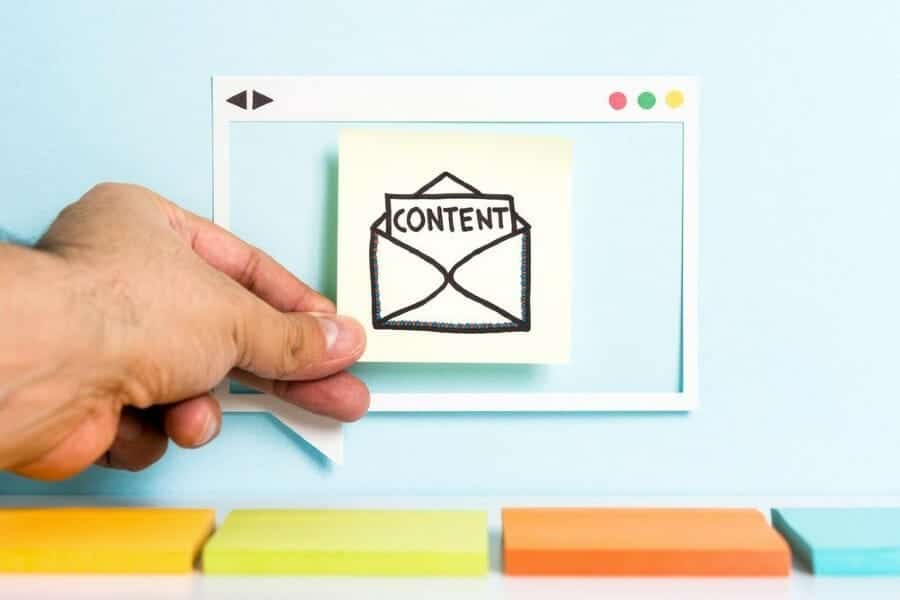B2B content marketing involves creating and targeting relevant messages (digital content) towards your audiences from other businesses. Unlike B2C content marketing, where the objective (most of the time) is immediate conversion, B2B marketing caters to a broader aspect of creating brand value, consumer loyalty, and engagement with the consumer, eventually resulting in sales.
B2B content marketing is received by a consumer in a passive format. While coming across a B2B message the consumer may not immediately buy a product or service instead she/he may ponder, compare, evaluate, and then choose. B2B communication is intended in the direction of problem-solving or providing a business solution. So, consumers looking for information on a specific product line, seeking solutions to their business problems, making comparisons amongst services from various providers majorly turn out to be the audience for B2B content marketing.

B2B content Marketing Strategy
Digital platforms today are flooded with content. A consumer can be bombarded with necessary or unnecessary information once she/he is on a digital platform. In such a scenario it becomes vital to create a message that can drown out the crowd. A consumer will read your content only if it creates any value and interests him/her.
How to effectively develop a B2B content marketing strategy?
Content is the king. Therefore a major chunk of your effort should go into creating the right kind of content for the right kind of audience promoted through the right kind of tools. Offer your consumers novel and relevant content, they surely will pay attention. Simple steps you could follow include:
Define who your audience is…The right kind of audience!
Take some time out to think over whom you are intending to talk to through your content. Find out what they need to know from you. Do they know you already or not? Are they the users of your products and services or are they the users of a competitor? What are their experiences, their pain points, and their challenges? Which sources of information do they prefer? What are the social media preferences and what kind of messages excite them, inform them or influence them?
All these questions need to be answered before you brainstorm on giving words to your ideas for reaching out to them. Developing buyer personas and diving deep into the demographics and psychographics can help you define your exact customer and identify their precise needs and concerns.
The next step in the process is to create meaningful messages…The right kind of content!
Once you are aware of who you are talking to and what they want to hear from you, it becomes easier to craft an effective message. An effective message is the one that is perceived by the audience in the same manner as was intended by the communicator. The success of your content is reflected in its ability to achieve the target that you had set before sending it out. If the consumer does not act to the call of action, probably the message did not reach out to them successfully. You may consider redesigning the same if this happens to be the case.
The fundamental goal of any content marketing tactic is to drive results and increase revenues, the cycle of which can either be short term or long. While the results from a B2B marketing strategy are mostly realized in the long term, the message should always be crafted to drive the desired results ultimately.
Another important aspect is determining the structure and form of your content. Once you have researched your target audience you are aware of their preferences and liking. If you know that your targeted group is an avid reader of online content then you can divulge into details for your content, but if you find out that the audience is fond of visuals more than plain text then you may want to add creativity to your content piece. Adding elements that may enhance the visibility and readability of your content is the right choice.
The third step is efficiently promoting the content that you have created…the right kind of tools!
You know your audience; you have the content ready for them, now it’s time to reach out to them. Finding the best tools from the already existing set makes your work much easier and helps you reach your goals timely. You can choose from an array of communication tools that are meant for carrying out successful B2B conversations.
A newsletter, a blog, a guest article on another website, a white paper, a piece of thought leadership, an infographic, a social media post, a podcast, or a video message all comprise a list of effective tools for B2B content marketing. An important tip to add here is to talk about current trends and latest developments prevailing in the industry and thinly veiling these to promote the benefits that your products and services may offer.
A wise choice amongst these tools is needed to be made while keeping in mind the ultimate objective that you want to achieve. For example, if you want to enhance your brand value and emerge as an industry influencer, then tools such as research blogs, thought leadership pieces on solving industry issues, podcasts may be more useful. Similarly, if you intend to increase the brand visibility and generate new leads then enhancing your social media presence can do the job better.
Devising an effective B2B content marketing strategy is not as difficult as it might appear to be. The space has exorbitant potential in bringing out the anticipated results in a more time-saving and cost-effective way and is worth putting in your effort.

1 comment
Yes, I agree with you, I am also a digital marketer and the information given by you will be very helpful for me.
Comments are closed.